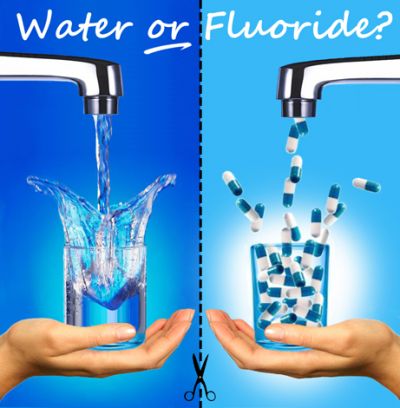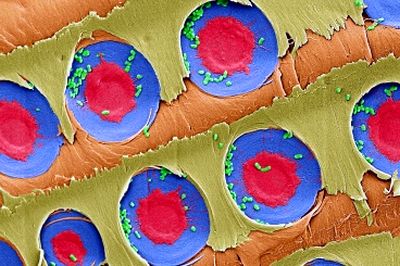“The study found a striking contrast between the in vitro (cell model) and in vivo (animal model) results: within the former, fluoride prevented calcification, within the later, it enhanced medial [middle portion of the artery] vascular calcification in the arteries of animals whose kidneys were weakened. Keep in mind that they did not use ‘mega doses’ of fluoride in the animal study, . . .” – S Ji
 Fluoride is put in your drinking water ‘for your teeth’ without your consent, but did you know that it could also be calcifying your arteries?
Fluoride is put in your drinking water ‘for your teeth’ without your consent, but did you know that it could also be calcifying your arteries?
A few years ago, we reported on a study evaluating a new diagnostic technology that inadvertently revealed a link between fluoride exposure and coronary artery disease. Our report stirred up quite a lot of controversy and criticism, even leading one of the most respected figures in alternative medicine (deservedly so) – Dr. Russell Blaylock — to call us out on Infowars for our allegedly sophomoric interpretation of the following article: “Association of vascular fluoride uptake with vascular calcification and coronary artery following article disease.” As one can see, the study’s results revealed a hitherto largely unknown connection between fluoride exposure, coronary artery disease and cardiovascular events (e.g. heart attack).
“There was significant correlation between history of cardiovascular events and presence of fluoride uptake in coronary arteries. The coronary fluoride uptake value in patients with cardiovascular events was significantly higher than in patients without cardiovascular events.”
The argument, at the time, was the study was simply about a new diagnostic technique and shouldn’t be ‘read into,’ and that, presumably, the increased fluoride uptake value observed in patients with a higher frequency of cardiovascular events was a an ‘effect’ of the heart disease itself and not in any way indicative of fluoride’s causative role as a cardiotoxic agent — despite the fact that fluoride’s cardiotoxicity has already been consistently demonstrated in the biomedical literature.
Now, a provocative new study published in the journal Toxicology not only provides some vindication for our previous interpretations, but also raises serious concern over the cardiovascular complications associated with water fluoridation practices, showing for the first time that despite exhibiting an anti-calcification effect in vitro (cell model) fluoride exposure at levels found in people who drink fluoridated water exhibits artery-calcifying effects in the more important in vivo (animal) model. Continue reading

 Many countries classified as ‘third world’ are looking for inexpensive ways to purify water that has become contaminated by industrial waste, and individuals in the US, Europe, and other more prosperous nations could stand to find new ways of minimizing the contaminates in municipal water supplies as well. At a national meeting of the American Chemical Society, new evidence was presented that cilantro, the herb most commonly known as an ingredient in salsa and many Asian dishes, can help to leech toxins from water.
Many countries classified as ‘third world’ are looking for inexpensive ways to purify water that has become contaminated by industrial waste, and individuals in the US, Europe, and other more prosperous nations could stand to find new ways of minimizing the contaminates in municipal water supplies as well. At a national meeting of the American Chemical Society, new evidence was presented that cilantro, the herb most commonly known as an ingredient in salsa and many Asian dishes, can help to leech toxins from water.
